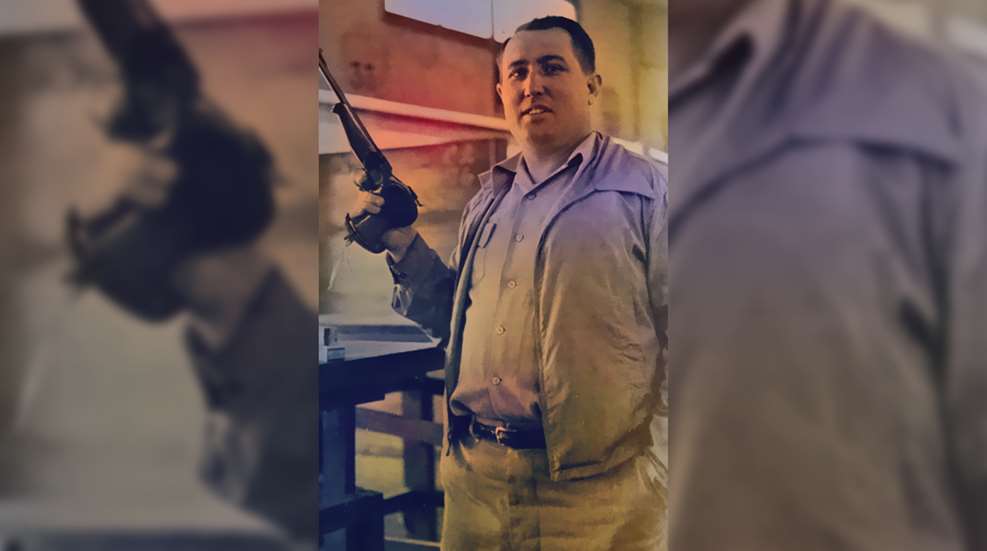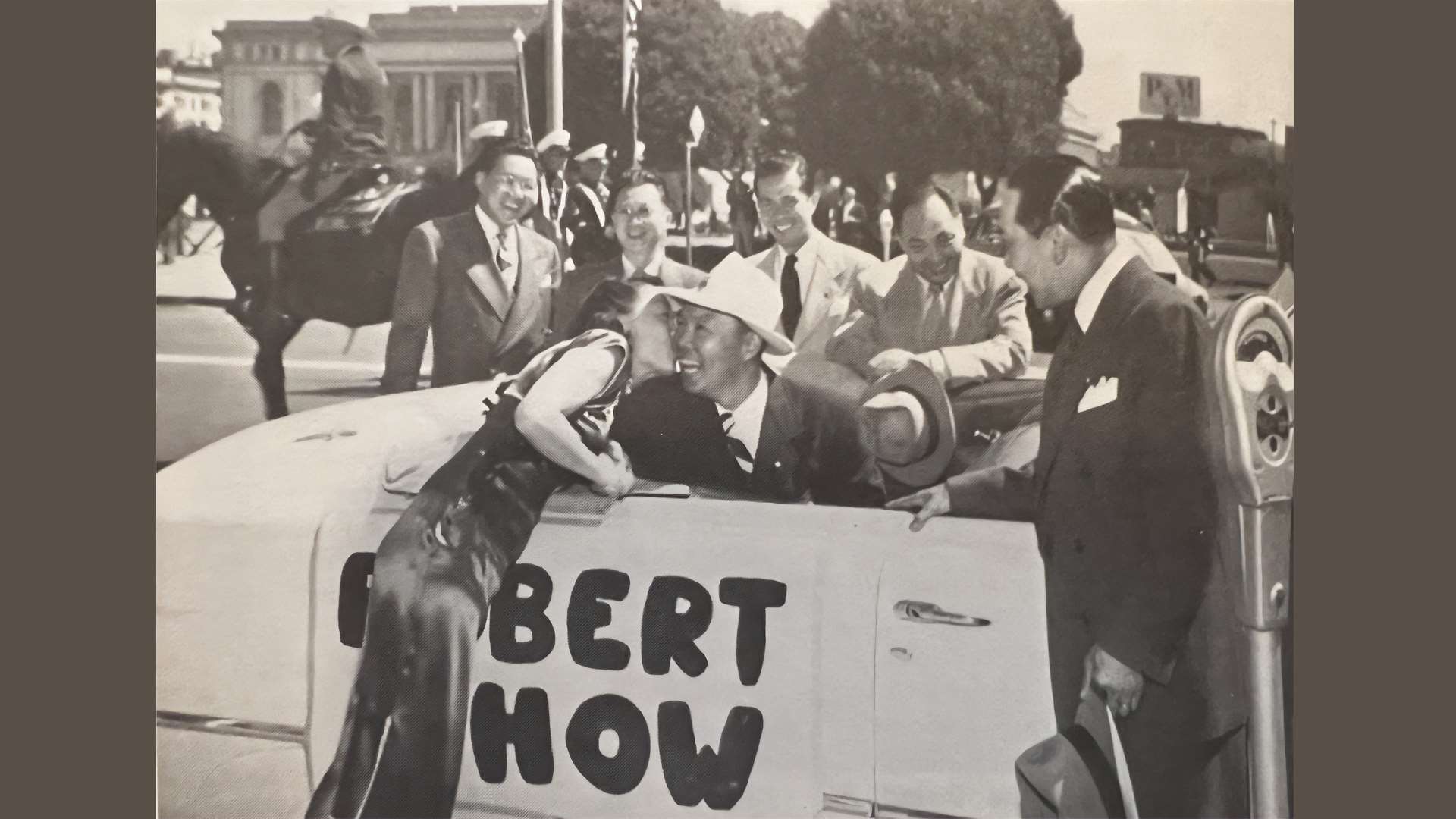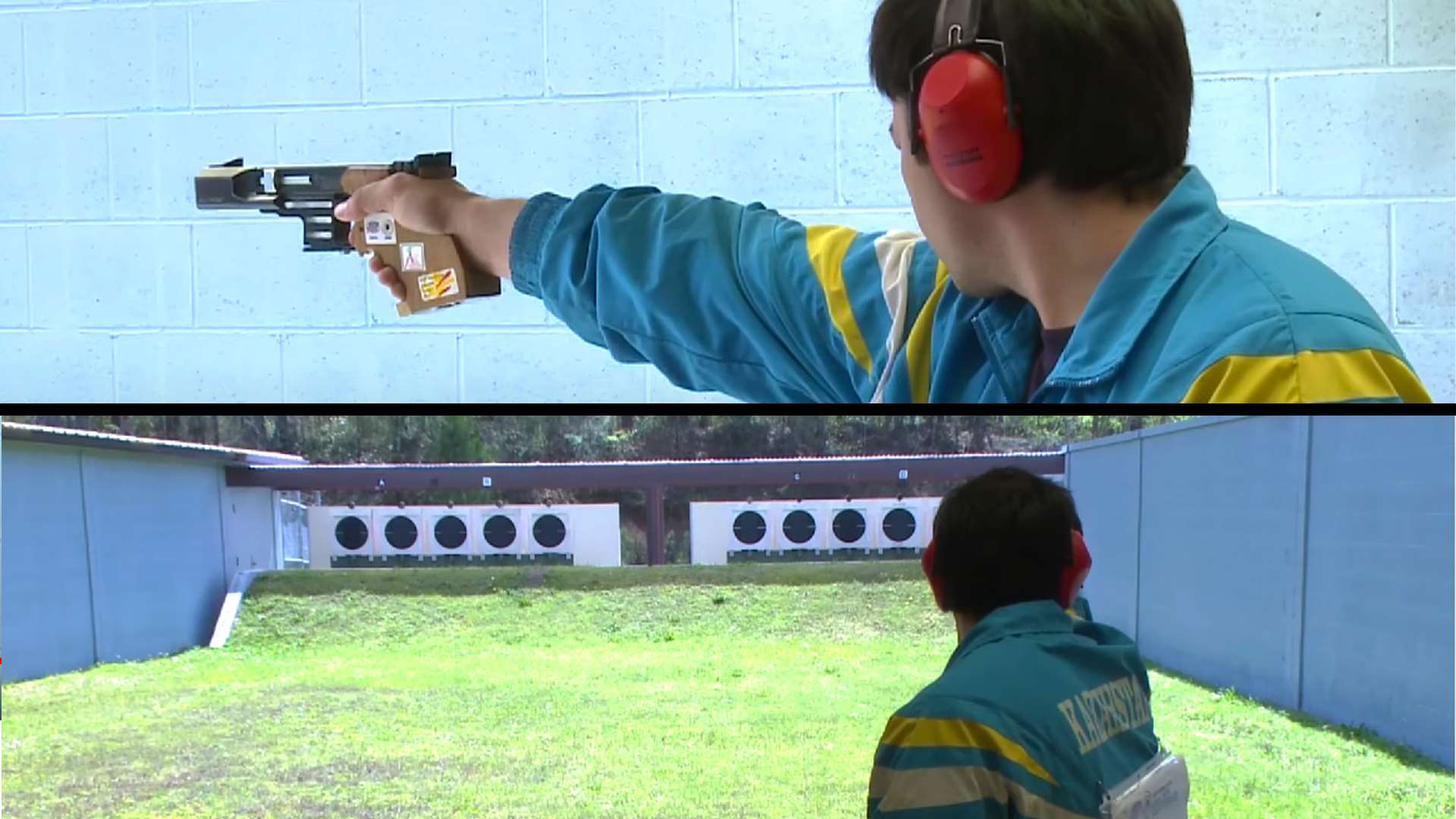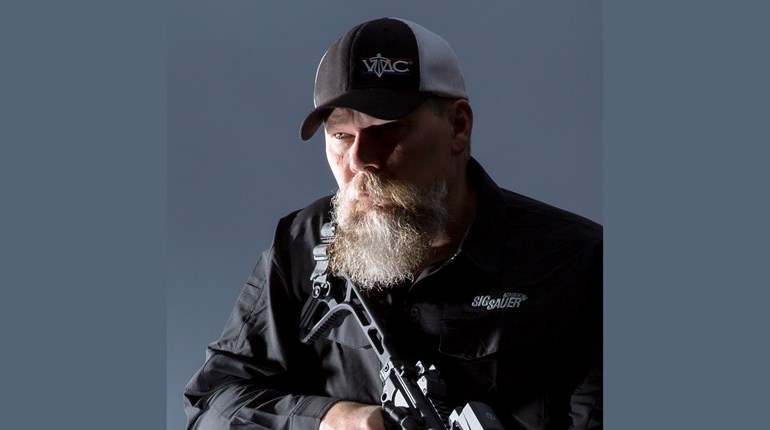
The below is an excerpt from the 1978 book, Olympic Shooting, written by Col. Jim Crossman and published by the NRA.
The Rapid-Fire Pistol Match
By Colonel Jim Crossman
The rapid-fire pistol match, the second Olympic handgun event, puts emphasis on both speed and accuracy. It is shot on a group of five man-sized silhouettes, spaced side by side at 75-centimeter intervals (30 inches) and at a distance of 25 meters (27 yards). The targets are pivoted on vertical axes and arranged so that they can be exposed (faced) or turned away (edged) simultaneously.
The shooter stands with his gun pointing downward at a 45-degree angle and calls for the targets. The edged targets are flipped around to face him from two to four seconds later. At this time the shooter raises his arm, fires one shot at the right target, shifts his point of aim over to the next target and fires one shot, and so on until he has fired five shots—or the targets disappear. [Note: In modern times, 25m rapid-fire pistol events at the Olympics and ISSF competitions are fired on electronic targets—Ed.]
The Olympic match includes two 30-shot courses. Each course includes two five-shot strings at the silhouettes, with a time limit of eight seconds for each string. The time limit then drops to six seconds for each of two strings, and finally goes down to four seconds for each string. With four seconds in which to raise the gun up to the target, fire a shot, move over to the next target and shoot and move over again for five shots, it is obvious that the shooter has considerably less than a second per shot and that he cannot spend much time contemplating the beauties of nature.
Despite the short time, this is still a game of precision. Some years back the European Fire of Defense dueling course included six silhouettes and a final time limit of two seconds. This was strictly a race against time and the shooter was merely trying to hit the silhouette. However, the present target has scoring areas on it, and the object is to hit the 10-ring. Oblong in shape, the 10-ring is 10x15 centimeters (3.9x5.9 inches), the 9-ring is 20×30 centimeters (7.9x11.8 inches), and so on. The 7-ring is the last complete scoring area on the target, the others down to a value of one being small areas only at the top and bottom of the target.
While the short time limit might lead you to think that this is a snatch-and-grab-em event with little attention given to accuracy, a look at the scores shows otherwise. Scores in the 1972 Olympics were 595, 594 and 593 out of 600 for first, second and third places. The winner dropped only five of his 60 shots out of the 10-ring. All three scores equaled or beat the previous Olympic record (set by Zapedski in 1968), while winner Zapedski's score of 595 tied the world record and set a new Olympic record.
The pistol used in the rapid-fire matches has gradually developed into its own peculiar type. The keys to handgun shooting are sight alignment and trigger squeeze, which take time—something the rapid-fire shooter lacks. To make the most of the time he has available, it is necessary to have a gun that handles steadily and smoothly, with little or no recoil to disturb sight alignment. Yes, surprisingly, recoil of the .22 pistol is important in this match. Consequently, people are using autoloaders chambered for the .22 short cartridge and fitted with muzzle weights and muzzle brakes to hold the gun down. Following Russian developments, there is some effort with special low-velocity short cartridges and vented barrels to give the least possible recoil.
The combination of the low-velocity cartridge and the vent holes in the barrel to let the gas escape results in little recoil and quite low velocity. In fact, it often is possible for the shooter to see his bullet wending its leisurely way towards the target. There is a slight tendency for the shooter to stand enthralled as he watches bullet after bullet plunk into the 10-ring, until the last bullet plunks into nothing because the target has turned away.
While it is possible to learn the fundamentals of this course with any good .22 pistol, the shooter should seek the best equipment available. Such guns as the Hammerli International, and the High Standard Olympic ISU are designed for this course of fire. Unique and Walther have also put out guns that have been used in this match. The gun should be highly accurate, with a muzzle brake and adjustable weights, and chambered for the .22 short cartridge. There is enough difference between the recoil of the long rifle and the short to make the short the only choice. The muzzle brake will help somewhat, while the weights let the shooter adjust balance and overall weight to suit his style.
Sight alignment and trigger squeeze are the fundamentals, as in all pistol shooting. Another factor plays an important part—a factor that is not so important in the free pistol match. That factor is rhythm or cadence. With so little time available, especially in the four-second stage, it is necessary to use it economically. It is highly important to develop a rhythm for shooting each stage and to maintain that rhythm. One team went so far as to carry a metronome and each shooter would set it for the proper speed and listen to it for a few seconds before calling for the targets.
And the shooter must be prepared. Once the targets are turned, there is not time for the shooter to wonder what to do next. As with all shooting, he must give intense concentration to the job at hand, perhaps more so here because of the many things going on in a short time.
Getting the first shot off quickly and accurately is important. When the targets appear, the shooter's problem is to get the arm up and squeeze off a shot at the 10-ring in a time of a second in the four-second stage. This requires much practice and experimenting to find the best gun weight and balance and the best technique for getting the job done. While the four-second stage is the critical one, the same principles apply to the other time limits though there is a bit more time for squeeze.

The gun arm should start up fast but gradually slow so that it arrives exactly on target without going high. The pistol usually should be gripped quite hard, the pistol grip fitting the hand well. Trigger pull is something the shooter has to work out for himself, with the hot shooters voting for various figures between a few ounces and a couple of pounds. As the gun comes into position, the sights should be aligned or nearly so. The shooter who tends to lose the front sight should position the sight a bit high as the gun comes up so it can be readily caught.
It is up to the shooter to practice this first shot exercise slowly and deliberately until he works out all the details before trying for speed. The shooter must work on his timing for the eight-, six- and four-second runs, each of which is a little different. The important thing at first is to develop a technique before trying for speed. This takes a lot of practice, part of which can be done at home dry firing with an empty gun. During this, the shooter should keep his eye focused on the target—on the 10-ring, to be exact—and train himself to bring the pistol up in line with his eye. But as soon as he sees the sights, he should concentrate on them.
The next step in rapid-fire is to develop a smooth lateral swing from target to target. If the shooter merely moves his arm from one target to the next, he will find that the relationship of his eye to the pistol sights has changed, and he will have to shift the pistol. It is better to swing the whole body, keeping his arm and head in the same relationship to the sights. He can work out the fundamentals of this by dry firing, too. If the shooter sets up five 3x5 cards 4½ inches apart across a 12-foot room, he will have about the right angular relationship.
The shooter should face the targets perhaps a bit more than customary in U.S. pistol shooting and make certain that he can swing easily from end target to end target. The rapid-fire game requires a tensed, ready-for-action position. He does not want to get involved in breathing during a string, so if he starts with a couple of deep breaths before calling for the targets he should get by all right. Some shooters have experimented with the use of a colored front sight as an aid to seeing it quickly. A shooter is advised to stay with a black sight unless he can conclusively prove colors are better for him.
Once a shooter has worked out a technique of getting off the first shot and swinging to the next target and has his timing down pat, then it is time for some shooting.
Here he may have a problem, since there are not as many international rapid-fire ranges as he would like to have. If he cannot find anything readily available, building a rapid-fire target is not too much of a chore if the shooter is willing to settle for hand-operation of the targets. Aside from the targets, a minimum of equipment is needed.
A booth to protect the shooter as is used in the Olympics, is valuable but not essential to learning the rapid-fire pistol game. A pistol magazine and ammunition are essential. The target operator will need a stopwatch and some target pasters. A table for pistol and ammunition will be handy. Since only a 25-meter range is required and the shooting is done with .22 short cartridges, the real estate for the range need not be extensive.

As with any other shooting sport, the person who wishes to be top-notch will have to work hard at the rapid-fire event. It is an exciting event to shoot with fast action required. A shooter will enjoy every minute he spends on the rapid-fire pistol range.

































